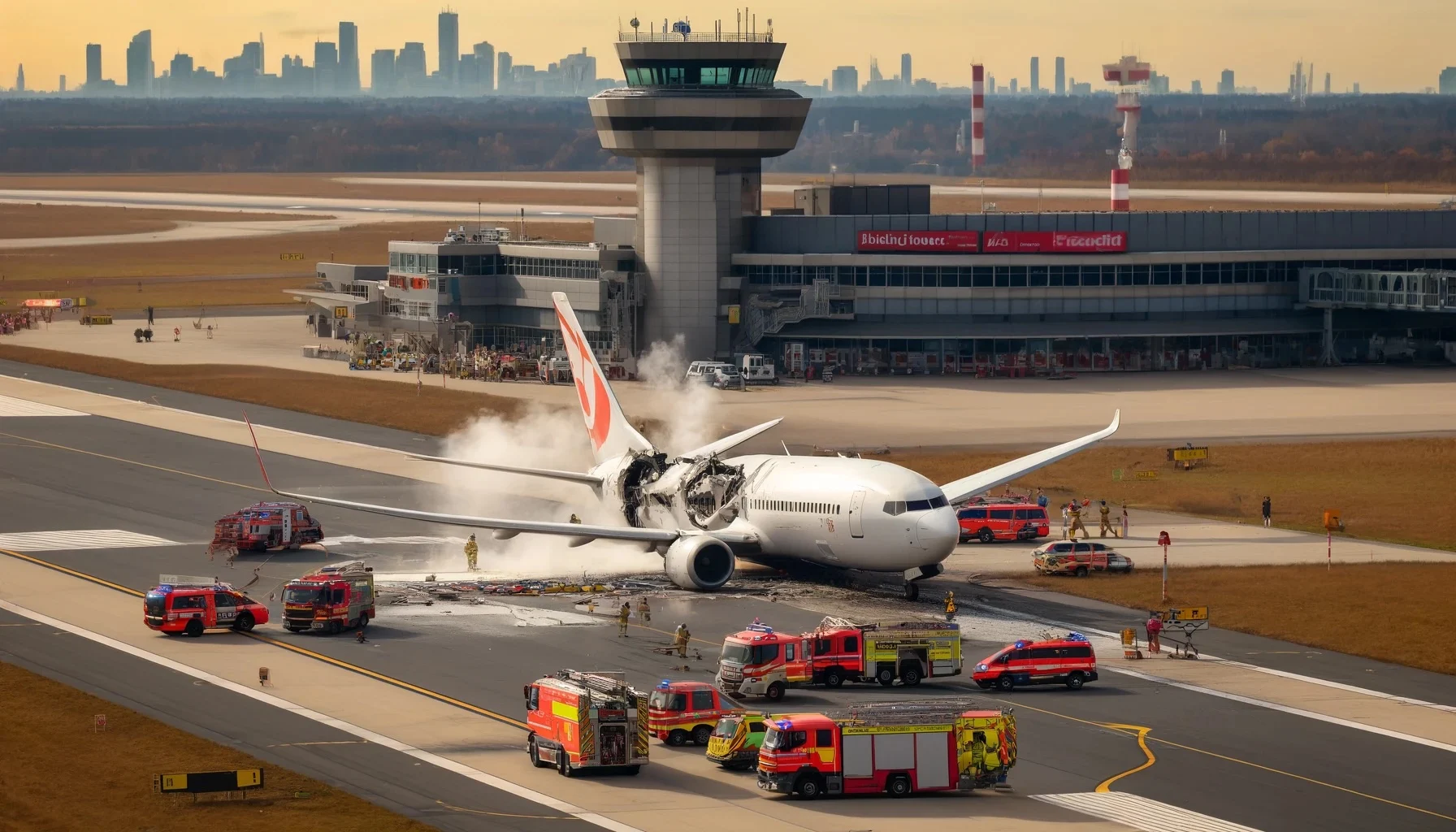
The Sudden Crash of Sudan Airways Flight 139
by: The Calamity Calendar Team
June 8, 2003
The Fateful Morning
In the early hours of July 8, 2003, Sudan Airways Flight 139 was preparing for its journey from Port Sudan to Khartoum. The Boeing 737-200, a sturdy aircraft designed for short to medium-haul flights, carried 106 passengers and 11 crew members. The passengers, a mix of locals and a few international travelers, settled in for what was supposed to be a routine domestic flight.
As the aircraft taxied down the runway and took off, everything seemed normal. However, just moments after takeoff, the crew encountered an issue that would seal the fate of everyone on board.
Disaster Strikes
Shortly after becoming airborne, the aircraft’s engines began to fail. The flight crew quickly realized the severity of the situation and attempted to return to the airport. Unfortunately, their efforts were in vain. At approximately three kilometers from the airport, in a harsh and unforgiving desert terrain, the plane crashed.
The impact was catastrophic. The aircraft broke apart, and a fire quickly engulfed the wreckage. Rescue teams were dispatched immediately, but they faced significant challenges due to the crash location and the intense heat from the fire.
Thanks for subscribing!
The Aftermath
Out of the 117 people on board, 116 perished in the crash. Miraculously, a two-year-old boy was found alive among the wreckage. His survival initially offered a glimmer of hope amidst the tragedy. However, this hope was short-lived; the child succumbed to his injuries shortly after being rescued, bringing the death toll to 117.
The devastating loss of life was felt deeply across Sudan and beyond. Families were torn apart, and a nation mourned the loss of so many lives in such a sudden and violent manner.
Investigation and Findings
In the days following the crash, an investigation was launched to determine the cause of the accident. What emerged was a troubling picture of systemic failures within Sudan’s aviation sector. The investigation revealed that the engine failure was a result of inadequate maintenance practices. Political instability, economic hardship, and sanctions had left the country’s aviation industry in a precarious state, unable to properly maintain its fleet of aircraft.
The Boeing 737-200 that operated Flight 139 was found to have significant mechanical issues that should have been addressed long before the fatal flight. The lack of proper maintenance was a direct consequence of the challenges faced by Sudan at the time.
Calls for Change
The tragedy of Sudan Airways Flight 139 became a catalyst for change within the country’s aviation industry. The investigation’s findings led to calls for improved safety standards and the modernization of Sudan’s aging aircraft fleet. Regulatory bodies emphasized the need for rigorous maintenance protocols and better oversight to prevent such disasters in the future.
Compensation and support were provided to the victims’ families, but no amount of money could replace the lives lost. The crash served as a grim reminder of the importance of aircraft maintenance and the catastrophic consequences of neglecting safety standards.
A Lasting Legacy
Today, the crash of Sudan Airways Flight 139 stands as a poignant example of the dire consequences of inadequate aviation safety measures. The lessons learned from this tragedy have driven efforts to improve aviation safety not only in Sudan but across the region.
The story of Flight 139 is one of sorrow and loss, but also one of resilience and the enduring quest for safer skies. It underscores the critical importance of stringent maintenance practices and the relentless pursuit of safety in the aviation industry.
As Sudan continues to navigate its political and economic challenges, the memory of those who perished on that fateful morning in July 2003 serves as a solemn reminder of the need for vigilance and care in the skies above.
Stay in the Loop!
Become a Calamity Insider and get exclusive Calamity Calendar updates delivered straight to your inbox.
Thanks! You're now subscribed.